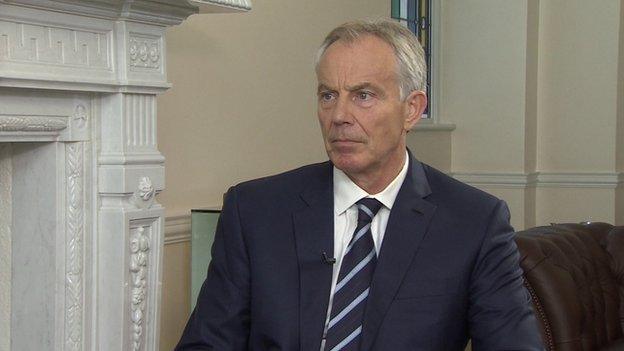7 July London bombings: Togetherness is anniversary message
- Published
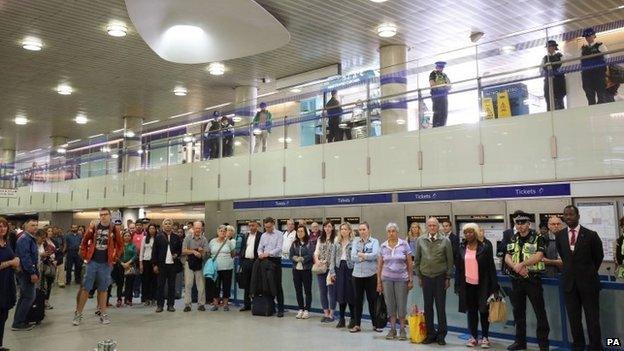
King's Cross stood still to remember the 7/7 victims
At first glance it was a rush hour like any other at King's Cross station.
The same stream of commuters rushing through the barriers; the same frustrations at delays on the tube.
But this morning a small group of people quietly gathered at the 7/7 memorial plaque. A station announcement told people there would be a minute's silence.
At exactly 08:50 BST, the moment the blasts went off, commuters across the concourse stopped where they were, and there was a hush.
Tube workers stood together, heads bowed.
Survivors comforted each other and shared a moment of quiet reflection on what they had experienced exactly a decade ago.
Twenty-six people were killed on a Piccadilly Line train after it left the station, the worst toll of the attacks.

This wasn't the official national silence - that would come later at 11:30. But at the affected stations - King's Cross, Russell Square, Edgware Road and Aldgate - there was an added poignancy for those about to board trains.
Among those at King's Cross was city worker Emly Skiba, on her way to Canary Wharf, who found herself moved to tears at the tribute.
"I hadn't planned to be here, I just happened to be passing. But it suddenly struck - so many people died," she said.
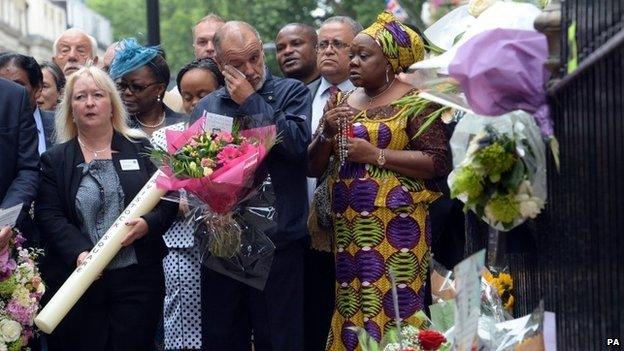
George Psaradakis (centre), the driver of the number 30 bus which was blown up in Tavistock Square, alongside Marie Fatayi-Williams (right), whose son Anthony was killed.
As people began to disperse, a young woman emerged from the crowd and laid a handful of handpicked flowers, before moving silently on.
Brightly coloured flowers were heaped high at the spot in Tavistock Square where the final bomb exploded on a packed number 30 bus, almost exactly an hour later.
At 09.47 BST, the time of the blast, a tight huddle of people gathered on the pavement, spilling out into the road.
Doctors from the nearby British Medical Association - who were the first on the scene that day - returned to remember the 14 people they were not able to save.
The parents of one of the victims, Anthony Fatayi-Williams, whispered a prayer.
Across the road, a bus driver pulled up and quietly watched from his cab.
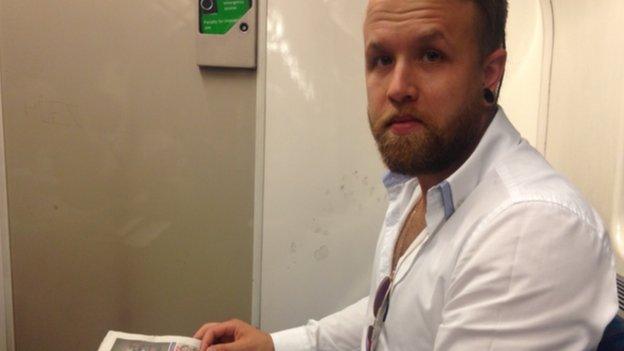
Tube commuter Jan Nova, a fashion designer, said "you have to carry on"
On the Tube, the mood among passengers was solemn but defiant.
Jan Nova, an Estonian fashion designer living in London, was reading coverage of the 7/7 anniversary in the Metro on his Circle Line commute to work.
"Of course sometimes when you get the Tube, you think about it," he said.
"But none of us can know when and where something might happen, and so you have to carry on."
Other Londoners showed their solidarity this morning by taking part in the "walk together" initiative, getting off their Tube or bus a stop early and walking in memory of 7/7.
It was an echo of that day, when thousands stranded by the crippled transport network walked home.
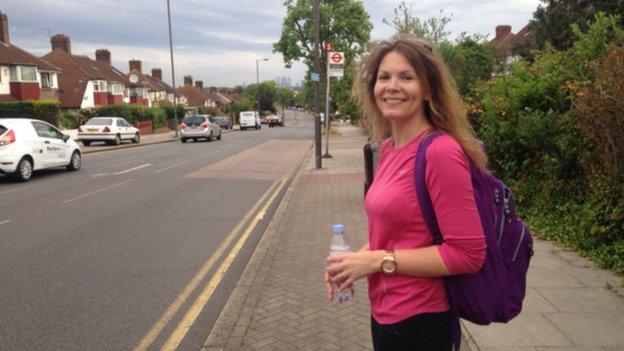
Lins Drabwell can remember the events and her feelings on 7/7 clearly
Among this morning's trekkers was 35-year-old Lins Drabwell, who chose to walk the whole 8.4 miles (13.5km) from her home in Bromley to her office in London Bridge. She said doing the "walk together" on the 10th anniversary was "an easy decision".
"I remember 7/7 so clearly. Our office was near Edgware Road. We could see the station from our office window, and the emergency services going in," she said.
"I remember feeling that the attack was personal. It was my city, and my people. I felt very protective. That evening, I remember this mass of Londoners, all walking. It was very subdued.
"The next morning, I remember walking in seeing businessmen on the back of motorbikes, people who had dug out rusty old bikes, people on roller skates. There was a defiance."
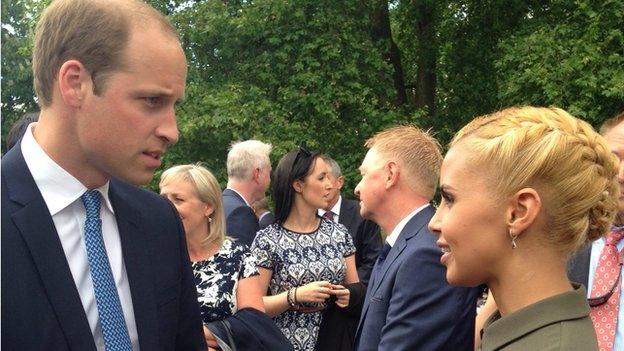
Prince William chatted to Shanie Ryan, who suffered from post-traumatic stress disorder after the attacks
There were two services at the 7/7 memorial in Hyde Park, with the Duke of Cambridge joining victims' families, survivors and emergency workers for the second, highly emotional event.
Prince William, whose mother Diana, Princess of Wales, died when he was 15, spoke about loss to King's Cross survivor Shanie Ryan.
Fellow King's Cross survivor Angela Ioannou, who was also at Hyde Park, said it had been a "hard day".
"I didn't think there were any more tears to cry," she said.
"I talked with some of the other survivors. It's having them that has helped me through."
Earlier in the day, at 11:30 BST, office workers gathered in the square outside St Paul's Cathedral to mark the national minute's silence.
Survivors and relatives of the victims were joined by Prime Minister David Cameron and the Duke of York inside the cathedral for an official service, where the resounding message was one of unity.
"Beyond the numbing shock of what happened, there was solidarity. There was unity in our grieving," the Bishop of London Richard Chartres said in his address.
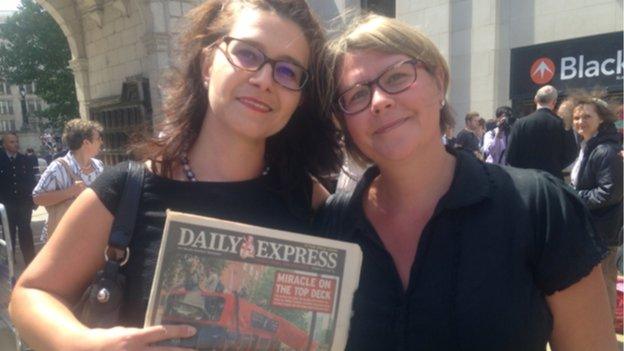
Carmen (left) and Sarah were both caught up in the Tavistock Square bus bomb
Many of the relatives and survivors in the congregation - strangers until their lives were brought together by the blasts - have become firm friends, and a vital source of support for each other over the last decade.
Carmen Macovei, who was on the top deck of the number 30 bus and survived, was at the service alongside Sarah who was standing next to the bus when the bomb exploded.
They met at one of the survivor assistance centres set up in the wake of the bombings - and found solace in the fact they shared the same emotions about the day.
Ms Macovei had with her the front page of the Daily Express, where she can be clearly seen standing shell-shocked on the bus.
"I remember standing there after it happened thinking, 'What happened to my bus?' It still feels like yesterday.
"The most amazing thing was the way Londoners reacted after it happened - with tolerance and togetherness. It's an amazing city.
"I remember every year, either at Tavistock Square or privately."
A peal of bells marked the close of the service, ringing out from the dome of St Paul's - the landmark of London's skyline, which came to symbolise the capital's resilience during the Blitz.
How fitting that it should host a coming together of Londoners to remember not only those who died on 7 July 2005, but how the capital carried on, refusing to be cowed by terror.

The victims
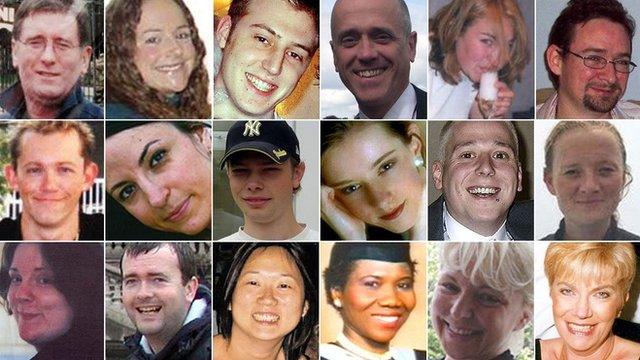
A total of 52 people lost their lives when four suicide bombers attacked central London 10 years ago. Here are their stories.

- Published6 July 2015

- Published7 July 2015
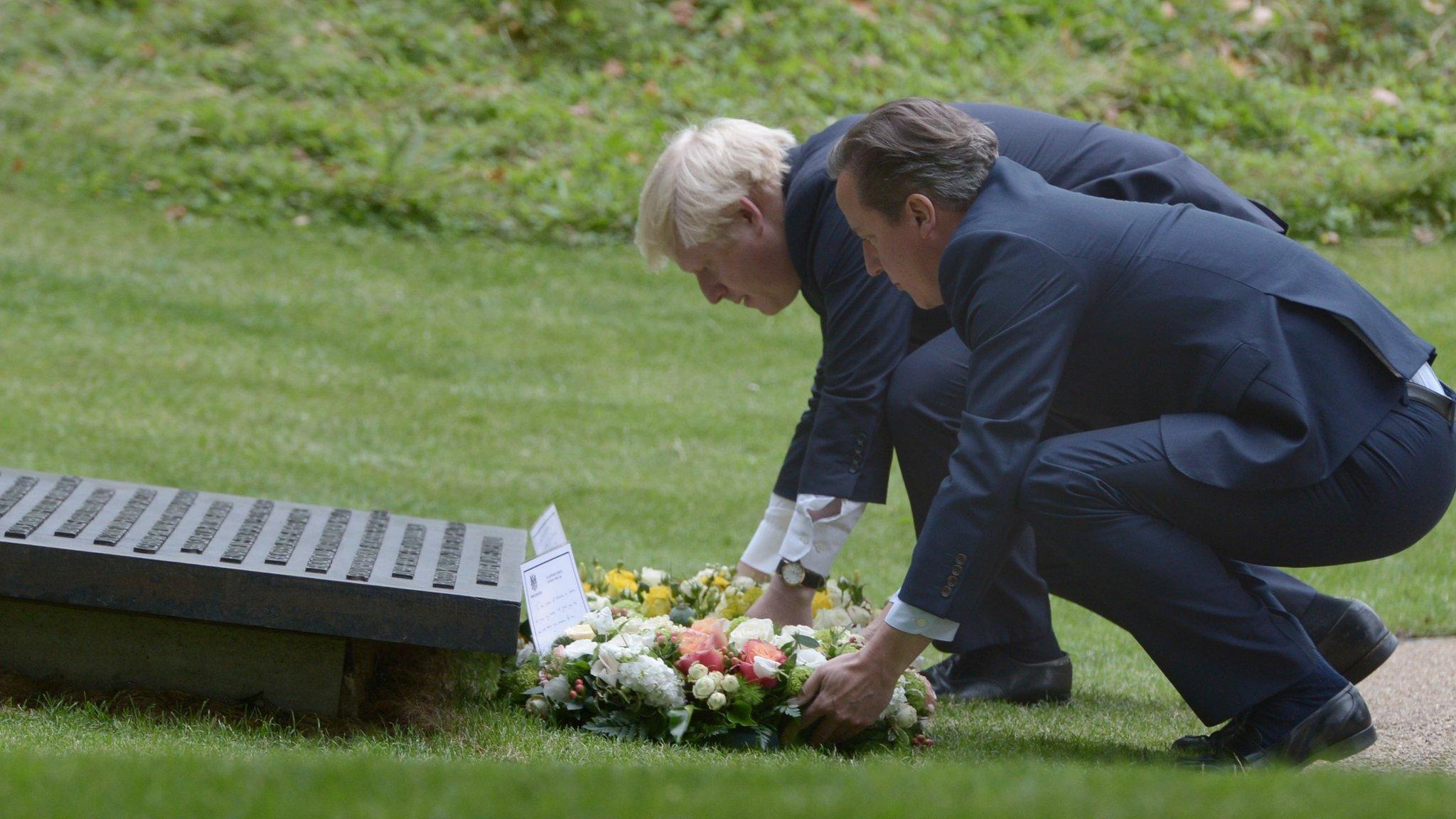
- Published3 July 2015
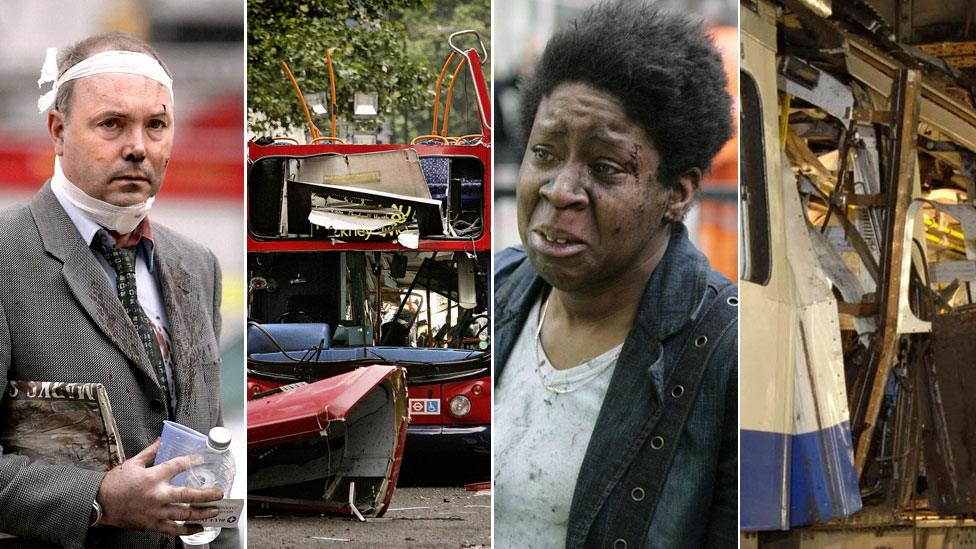
- Published3 July 2015
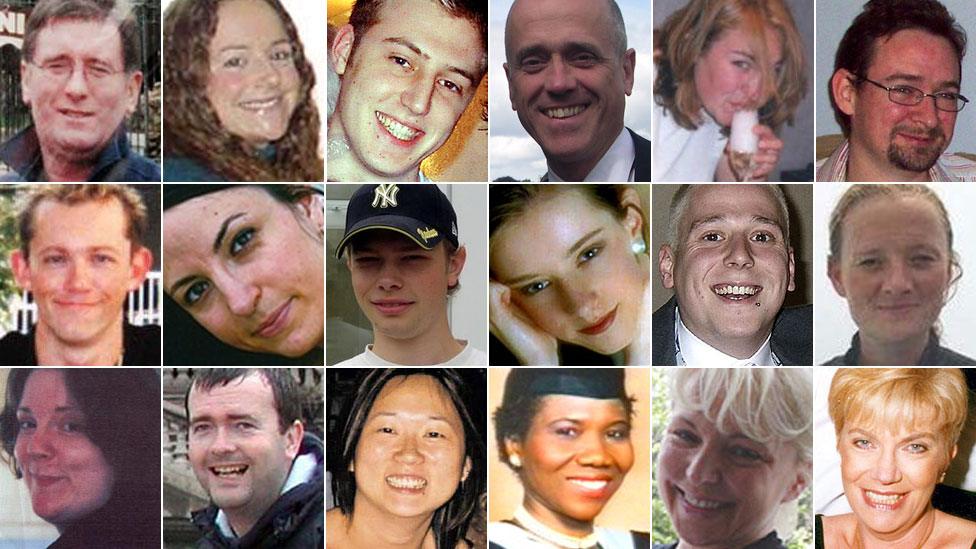
- Published6 July 2015

- Published7 July 2015
